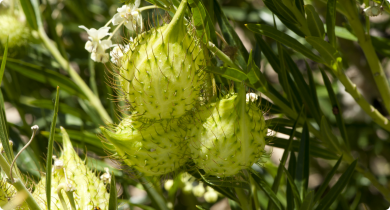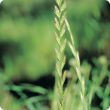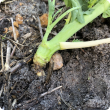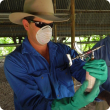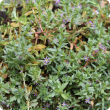Chemicals
Many primary producers in Western Australia rely on chemicals to protect their agricultural enterprises from pests, weeds and diseases. Chemicals provide many benefits to primary production but must be used responsibly to minimise the adverse effects associated with their use.
The Department of Primary Industries and Regional Development in conjunction with other state departments and federal authorities regulates the use of agricultural and veterinary chemicals to minimise risks to human health, the environment, animal welfare and trade.
Details about agricultural and veterinary chemical products registered for use in Western Australia can be sourced through the Australian Pesticides and Veterinary Medicines Authority.
Filter by search
Filter by topic
- Herbicides (139) Apply Herbicides filter
- Crops (77) Apply Crops filter
- Grains (71) Apply Grains filter
- Weeds (67) Apply Weeds filter
- Declared plants (43) Apply Declared plants filter
- Diseases (34) Apply Diseases filter
- Fungi (24) Apply Fungi filter
- Mechanical, physical and cultural (24) Apply Mechanical, physical and cultural filter
- Grains research & development (24) Apply Grains research & development filter
- Pests (23) Apply Pests filter
- Crop diseases (23) Apply Crop diseases filter
- Biosecurity & quarantine (20) Apply Biosecurity & quarantine filter
- Baits & poisons (19) Apply Baits & poisons filter
- Biosecurity (18) Apply Biosecurity filter
- Wheat (17) Apply Wheat filter
- Weeds of National Significance (17) Apply Weeds of National Significance filter
- Fungicides (16) Apply Fungicides filter
- Crop weeds (16) Apply Crop weeds filter
- Livestock & animals (14) Apply Livestock & animals filter
- Canola (14) Apply Canola filter
- Preventing residues (13) Apply Preventing residues filter
- Pest animals (13) Apply Pest animals filter
- Livestock biosecurity (12) Apply Livestock biosecurity filter
- Lupins (11) Apply Lupins filter
- Barley (11) Apply Barley filter
- 1080 (10) Apply 1080 filter
- Pest mammals (10) Apply Pest mammals filter
- Livestock management (10) Apply Livestock management filter
- Pulses (8) Apply Pulses filter
- Residues in livestock (8) Apply Residues in livestock filter
- Insecticides (8) Apply Insecticides filter
- Veterinary chemicals (7) Apply Veterinary chemicals filter
- Residues in crops (7) Apply Residues in crops filter
- Pest insects (7) Apply Pest insects filter
- Livestock health & diseases (7) Apply Livestock health & diseases filter
- Food, export & investment (6) Apply Food, export & investment filter
- Biological control (6) Apply Biological control filter
- Field peas (6) Apply Field peas filter
- Oats (5) Apply Oats filter
- Strychnine (5) Apply Strychnine filter
- Invasive species (5) Apply Invasive species filter
- Livestock disease surveillance (5) Apply Livestock disease surveillance filter
- Pastures (4) Apply Pastures filter
- Livestock species (4) Apply Livestock species filter
- Food & beverages (3) Apply Food & beverages filter
- Beef cattle (3) Apply Beef cattle filter
- Dairy cattle (3) Apply Dairy cattle filter

